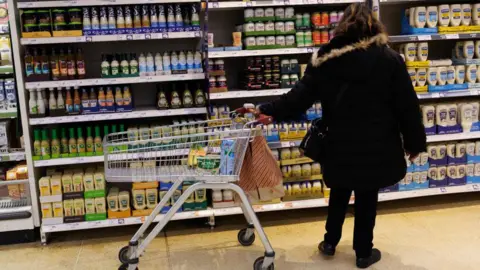**Dharshini David on Inflation Insights: A Gloomier Outlook Than Anticipated**
Dharshini David, Deputy Economics Editor at BBC News, has recently raised concerns regarding the current state of inflation in the UK. The rising costs of essential services, particularly energy and water bills, coupled with escalating prices in food and airline services, suggest that the inflation outlook may be more dire than previously thought.
April was marked by notable price hikes, described by some as “awful.” Households faced the burden of the highest increase in water bills in over three decades, alongside soaring energy prices. In this context, the inflation rate has reached unprecedented levels, overtaking inflation rates seen in countries like France and Germany. Nevertheless, there is a glimmer of hope: many workers have experienced wage increases that outstrip inflation, allowing their earnings to maintain relative purchasing power. Interestingly, the inflation rate peaked at an alarming 11% in late 2022. However, forecasts indicate that it may remain significantly lower as we move further into 2025.
Yet, this optimistic view comes with caution. The ongoing increase in gas and electricity bills is largely attributed to fluctuating global wholesale costs, a situation reminiscent of the cost-of-living crisis from recent years. While there is, in fact, a decline in wholesale prices, the structure of the billing system means that any benefits from these lowered costs may not immediately reflect in consumer prices.
Another contributing factor to the inflationary rise observed recently is service-related costs. A spike in airfares coinciding with the late Easter holidays has distorting effects on the usual inflation patterns. These airfares, alongside regulatory changes like the recent increase in vehicle excise duty, contribute to a broader concern around services inflation. Economists are particularly wary of the notion that businesses might be passing on costs related to National Insurance Contributions and wage increases directly to consumers—a trend that could further exacerbate inflationary pressures.
Looking ahead, although the consensus among economists is that inflation may creep upwards in the coming months, there is a collective agreement that the overall rate will remain below 4%. Projections suggest that it might not return to 3% until next year. Consequently, expectations regarding monetary policy adjustments are also affected. Many experts predict that the Bank of England may only implement one more interest rate cut this year, which would be disappointing news for countless homeowners preparing to remortgage.
Conversely, there are factors that could play a role in easing inflation pressure. The ongoing trade tensions and tariffs driven by geopolitical shifts, particularly the situation involving the United States under President Biden’s administration, might lead to a slowdown in global growth. Such outcomes could further reduce oil prices and other commodities, potentially alleviating the financial burdens on households by lowering petrol prices and food expenses.
Continued uncertainty regarding global trade policies may open the door for more affordable imports, particularly from countries like China. Nevertheless, the overall nature of inflation remains inherently unpredictable.
In summary, while inflation poses ongoing challenges for many households, particularly for those struggling to keep pace with rising costs, the economic landscape is rife with variables that may lead to unexpected developments. David’s insights underscore the importance of vigilance as we navigate this complex economic terrain, suggesting that a dismal outlook may still be just around the corner.



